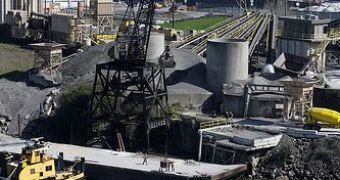By 2013, the first national limits on Mercury and other toxic emissions from cement plants will be effective. The EPA has steeped in to control air pollution from cement plants, as they are the third largest source of Mercury air emissions, coming from cement kilns. As each year, almost 23,000 pounds of airborne Mercury are released by cement plants, the new legislation allows to dramatically decrease the numbers.
Mercury pollution causes IQ loss and neurological brain damage in children, and the other toxic emissions cause asthma, heart problems, heart attacks and early death in people suffering from heart and lung disease. In three years all this should change, as Mercury pollution should be reduced by 92 percent, much more than the 81 percent the industry analysts expected from the Obama administration. Also, hydrochloric acid emissions will be reduced by 97%, total hydrocarbons by 83%, particulate matter by 92% and sulfur dioxide by 78%. As for the Nox emissions, they are already covered and will be decreased by an extra 5%, CleanTechnica.com reports.
For this new regulation, the EPA analyzed emissions from 89 kilns and took most of the standards from the 11 lowest-emitting plants in the US. This new policy will also make some economies, as health costs will be significantly reduced: for every dollar in pollution reduction (under $1 billion), the health costs will be reduced by $7 to $19. According to another EPA estimation, costs will be even lower, as they are thought to reach $350 million a year, instead of the current $950 million.
The announced next step for the US Environmental Protection Agency is limiting the greenhouse gas emissions from cement kilns, the third largest industrial emitters. This should help reduce the global greenhouse gas emission and maybe limit for a while chaotic weather and phenomena. Climate change caused by greenhouse gas is what is currently causing fires in Russia, but it also causes droughts, floods, melting glaciers, heavy snows, smog, sea level rise, drinking water salination, mudslides, the spread of tropical diseases, crop failure and desertification.
This is just one step towards a cleaner environment and hopefully more will come.

 14 DAY TRIAL //
14 DAY TRIAL //